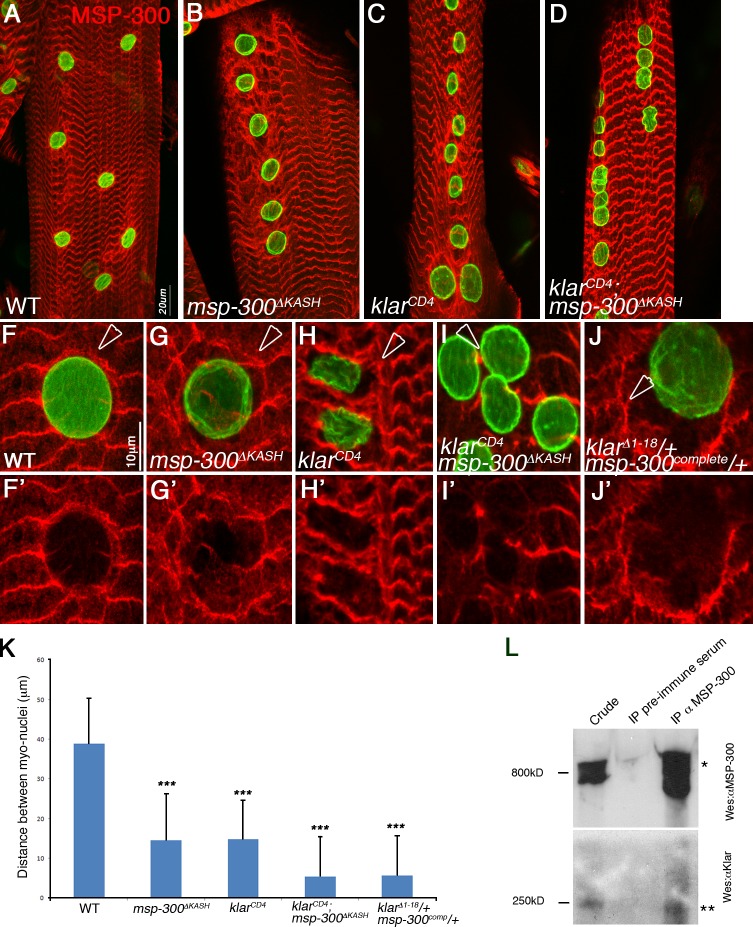Figure 3.
MSP-300 and Klar cooperate to connect the MSP-300 nuclear ring to the nuclear envelope, a process required for nuclear spacing. (A–K) Striated larval muscles of wild type (WT; A, F, and F′), msp-300ΔKASH (B, G, and G′), klarcd4 (C, H, and H′), klarcd4;msp-300ΔKASH double mutant (D, I, and I′), or klarΔ1–18/+;msp-300Δ3′/+ double heterozygous mutant (J and J′). Arrowheads mark the MSP-300 nuclear ring. Muscles were labeled with anti–MSP-300 (red) and anti-lamin (green). Note that the MSP-300 nuclear ring dissociates from the nuclear envelope in msp-300 or in klar mutants lacking only the KASH domain, as well as in the double heterozygous klar;msp-300 mutants, whereas the ring disappears in the double klar;msp-300 KASH knockout mutants. Dissociation of the MSP-300 nuclear ring correlates with the severity of the nuclear spacing phenotype, summarized in K. ***, P < 0.0001. Error bars indicate ±SE. (L) Immunoprecipitation experiment with anti–MSP-300 antibodies. The left lane shows the crude extract of larval muscles, the middle lane shows immunoprecipitation with preimmune serum, and the right lane shows the immunoprecipitated material with anti–MSP-300 antibody, reacted by Western blotting with anti–MSP-300 (top) or with anti–Klar-M (bottom). The immunoprecipitated MSP-300 is detected around the 800 kD (*) and Klar is detected at 250 kD (**). Bars: (A–D) 20 µm; (F–J) 10 µm.

